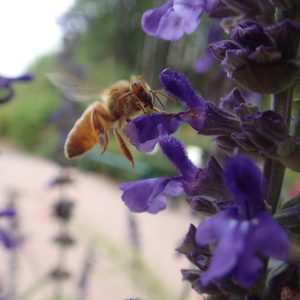To bee or not to bee?
Could that be the question you are asking yourself? Because of my love of honey, the answer was yes for me. As I learned more about the honey bee and its uniqueness, I became fascinated with this insect. Like the fact that it could create an intricate nest of wax created from a wax gland in its own abdomen. Or that it had the persistence to make a million trips from its home, returning each time with tiny amounts of flower nectar, and somehow fashioned it into a pound of honey. These were just a couple of many things that make honey bee interesting and different from any other animal on the planet. Click here for info our online beekeeping course.

Honey bee history
Honey bees we raise here are not native to the United States but to Europe. They have been here so long that it may seem as they are native. I believe most sources show them coming to the United States in the early 1600s. They were brought here by early settlers. That makes them about as native here as the European Settlers. In Africa, they have a honey bee that is more aggressive. In the 50s they were brought to Brazil in the hope that they would increase honey production. They escaped their confines and moved throughout South America and the southern United States. They have been mixing with European Bees in the United States since the 80s. You cannot tell the difference between the two strains with the naked eye. Only those bees mixed with the African strain are more aggressive. DNA testing is required to distinguish the two.
Pilgrimage to Florida
In January and February, beekeepers come to Florida from all over the Eastern United States bringing their European stock honey bees with them so they can be in on one of the coveted nectar flows in the country. Late February, while northern climates are still icy, it is then that the oranges begin to bloom in Central Florida, and the bees buzz to the blooms in droves to gather the nectar. This is also the time of year when bees start getting antsy and swarm from their hives to find a new home. Because of this, there is quite a large feral or wild population of European honey bee escapees here and the African strains are less prevalent than other areas.
Divide and conquer
During swarming, the honey bee queen leaves the hive with a large portion of the bees. They land in a nearby tree, shrub, or structure where the worker bees gather up in a large ball surrounding the queen. From this ball, containing up to 70 % of the hive’s bees, they will send out scouts that will find a new home. The bees left behind in the old hive pick several eggs or very young larvae and start to make new queens. One of these new queens will dominate the others as it hatches, soon mates, and becomes the new queen and egg layer of the hive. Learn more about swarms here.

Are you a Keeper?
The honey bee is fascinating and can be a fun hobby for many and business for others. Becoming a beekeeper is not for the faint of heart. If you are allergic to bee stings it isn’t recommended. If being stung occasionally is not something you can’t tolerate or risk, then you may want to admire them from afar. For me the reward of their rich honey keeps me going and I can’t imagine a time in my life that I wouldn’t be a beekeeper.
UF/IFAS Extension, Online Class
Is Beekeeping for you? Find out on September 12th by taking our online beekeeping class. Sign up and learn more at this Eventbrite link. That’s what’s new from the Hometown Gardener. Like and Follow me on Facebook at Hometown Gardener.
Read my other blogs by clicking here.
Stay in touch!
In Highlands County, our office is at 4509 W George Blvd., Sebring. The Master Gardener Help Desk is open Monday – Friday from 9 AM to 3:30 PM. Sign up for our Highlands County Master Gardener Volunteer, “Putting Down Root” Newsletter Here. Join our Facebook groups Highlands County Master Gardeners, Heartland Beekeepers, Central Florida Butterfly, and Pollinator Club, and Science-Based Florida Gardening Answers
 0
0
